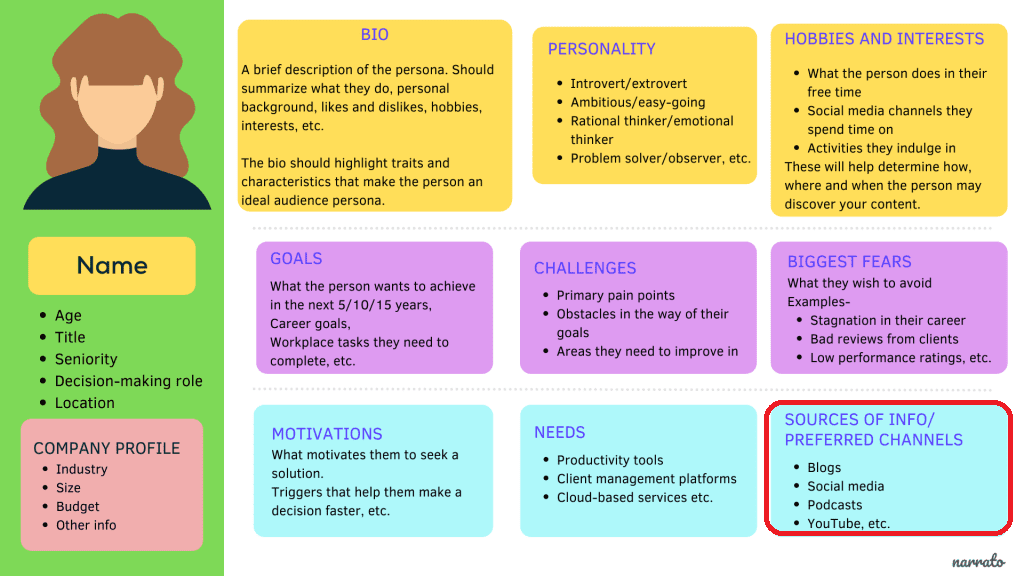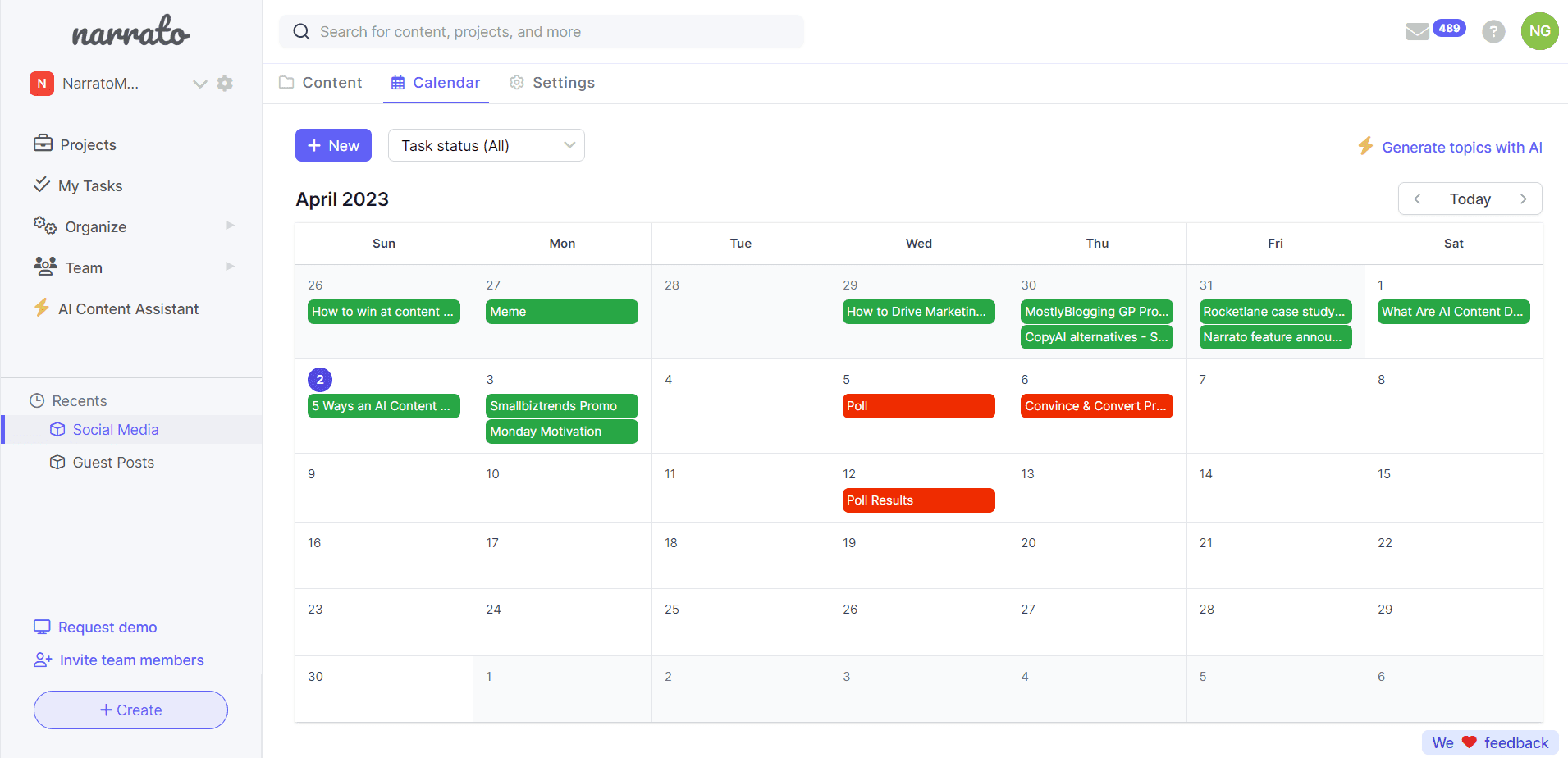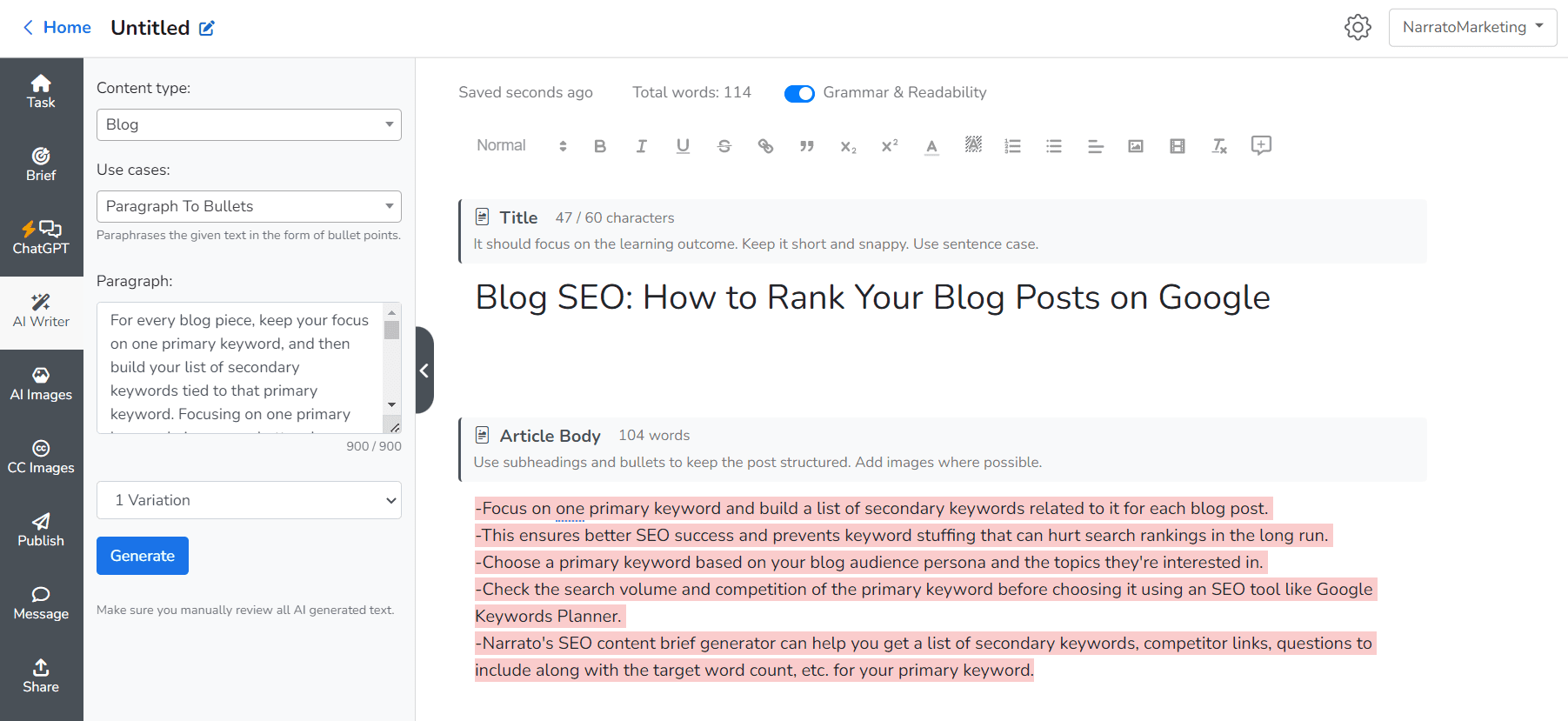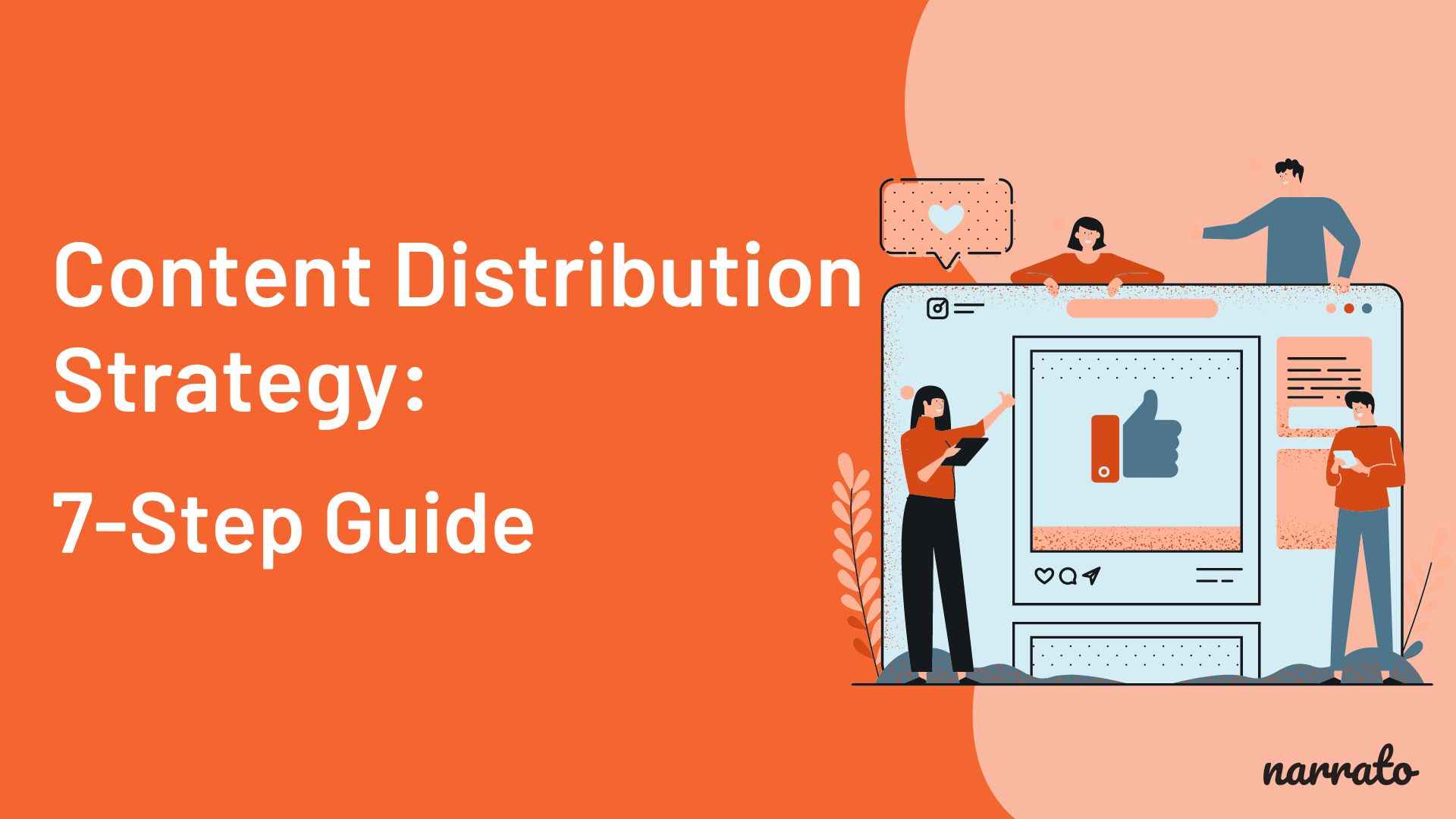Great content can drive terrific results for your business. But for that to happen, your content needs to find its audience. While search engine optimization helps the audience find your content organically, an effective content distribution strategy helps your content find the audience instead. Though ideally, organic search should grab enough eyeballs for your content, we all know that’s not easy. That is why it is extremely important to distribute and promote content on the right channels to increase its chances of reaching the right audience.
So what is a content distribution strategy? How can you ensure effective content distribution? In this article, we will answer all these questions and also share a 7-step guide to creating a good content distribution strategy alongside your content creation process.
TL;DR here’s a quick summary video of this article.
- What is a content distribution strategy?
- Why do you need an effective content distribution strategy?
- How can you develop an effective content distribution strategy?
- Steps for developing a good content distribution strategy

What is a content distribution strategy?
Content distribution refers to the practice of sharing and promoting content on different channels, in formats best suited for these channels. A strong content distribution strategy helps increase the reach of your content and build brand awareness.
There are different content distribution channels that you can choose from. Your content distribution strategy should define which distribution channels to pick, what type of content to share, and what conversion goals to target with this marketing activity.
So whenever you publish a new blog post, release a survey report, or create white papers and e-books, your content distribution strategy will dictate where, when, and in what format this content needs to be promoted.
Why do you need an effective content distribution strategy?
A marketer may look at content distribution as something they could skip or as something that is not instrumental to content marketing success. If you’re treating content distribution as an afterthought, you could be losing out on a lot of potential traffic, leads, and conversions. Here is why an effective content distribution strategy is an absolute necessity in your overall content marketing strategy.
An effective content distribution strategy will –
- Increase your content’s reach and boost discovery
- Build brand awareness and drive traffic to your website
- Put your content out in front of high-intent prospects
- Increases the chances of lead generation from content
- Boost content performance and thus, search rankings
- Drive results faster than simply relying on organic search for impact
With so many benefits at stake, you can’t just ignore the role of content distribution in a successful content marketing plan. If you’re not sure how to distribute content effectively and don’t have a documented strategy yet, here’s a complete guide on how to build one.
How can you develop an effective content distribution strategy?
Like all other business activities, content distribution also has to be done consistently and devotedly to drive any real results. To develop an effective content distribution strategy we have laid out this 7-step guide that you can apply to practically any type of content, be it your blog, videos, podcasts, case studies, or something else.
Steps for developing a good content distribution strategy
1. Set your goals
No matter what activity you are taking up in business, setting your goals before you start is a must. Your goals will help you understand what direction you’re supposed to go in and what to expect when the activity is done. Content distribution is also done with some goals in mind. These could be any of the following, or something else, depending on what your overall marketing goals are:
- Increasing your unique page views and traffic
- Increasing engagement on your content
- Reducing bounce rates and average time on page
- Increasing clicks, downloads, etc.
- Increasing social sentiment (likes, shares, comments, etc.)
- Driving micro-conversions like newsletter subscriptions or demo requests
These are just a few examples. It is important to assign a key performance indicator (KPI) to each of your goals. This will make it easier for you to measure performance in the later stages so that you know if your efforts are paying off.
2. Identify your target audience
Half of your problems are solved when you know exactly who you’re creating content for. The whole purpose of content distribution is to put your content in front of the right people. So knowing what your target audience persona is and determining what their preferences, pain points, and online behavior are like play a huge role in content promotion success.
If you have built a blog content strategy already, you most likely have your audience persona sorted. This is what a well-researched, detailed buyer persona should look like.

As you can see, marked in red is the section that lists your target audience’s preferred channels or sources of gathering information. These insights will play a major role in your content distribution strategy. This will tell you which channels to target, what kind of content to promote for each stage of the customer journey, and how to encourage engagement on your promoted content.
Knowing your audience’s likes, dislikes and behavior will go a long way in deciding the fate of your content promotion efforts.
3. Understand the different content distribution channels
From your research of where your target audience usually hangs out you may have already shortlisted some content distribution channels where you should promote your content. But before you begin, it is important to understand how these different channels work and which ones will help you achieve your goals faster.
When it comes to content distribution channels, there are broadly three different types – owned, earned, and paid channels.
Owned media
Owned media includes the following:
- Website
- Blog
- Social media accounts
These are channels that you own and control. Distributing content on these channels is a given, since it is entirely up to you how and when you want to promote your content on these channels. These are channels that you should definitely leverage. But it is also important to build a following on these channels first if you want to increase your reach.
Find out ways to get more social media followers and email subscribers for these channels to be worthwhile.
Earned media
Earned media channels include:
- Social shares
- Brand mentions
- Guest posts
- Press releases
- Interviews
- News/PR
- Forums
As is evident, these are channels that you don’t own but earn as a result of publishing good content or building good relationships with partners. This is equivalent to word-of-mouth marketing where third parties promote your content and brand, ideally for nothing in return. If there is an exchange involved, it usually means returning the favor and promoting them on your owned channels too.
If used well, these earned channels can be one of the most effective content distribution channels as they help you reach a wider, untapped audience beyond your own followers or subscribers.
It is important to note, however, that when you work on building relations with third parties for earned media choose partners that have a similar target audience as yours. This will ensure that your content reaches the right, relevant people.
Paid distribution
Paid distribution channels are:
- Paid social ads
- PPC ads
- Influencer marketing
- Remarketing and retargeting
Again, as the name suggests, paid distribution channels are those where you have to pay to get features. This includes PPC ads, social ads, paying influencers to promote your content or brand, etc. Though this is an effective way to put your content in front of your target audience, it is not an organic method and not every business may be able to afford it.
In our guide to developing an effective content distribution strategy, we will focus primarily on how to use owned media and earned media channels to distribute content.
4. Build a content distribution calendar
Once you have decided which of the above content distribution channels work best for you, it is time to start building a content distribution calendar. A content distribution calendar will lay out your content distribution plan along with timelines, so you can keep track of which content has already been promoted and what is to be done next. It works as a roadmap for the marketing team, giving them a clear idea of what content promotion activities they are supposed to undertake and when.
It is very similar to a blog content calendar that you would create to plan out your content for the month ahead. There are several editorial calendar tools you can use for this. Narrato’s content calendar will serve the purpose well too. You can build a custom workflow for your content distribution process with different color codes for each workflow stage. Then create a project for content distribution, where you can add all your repurposed content for promotion along with due dates. These content items will automatically appear on the content calendar, and you can visually track the progress of all tasks.

If you are using a spreadsheet to maintain your content creation calendar, you could add a separate column on it for content distribution too. You can also have dedicated columns for the channels where you plan to share the content and any other details. Make sure that you mark/highlight the respective column as you go on publishing on each channel, so you stay on top of the content distribution plan.
For creating your own content calendar, choosing a suitable content calendar template online is the easiest way to go.

5. Repurpose and optimize your content for distribution
When you’re promoting content on different owned or earned media channels, it is important to first understand what type of content works best on these platforms. For instance, what you would put in your email newsletter would not work for your social media promotions. To distribute on social, you will need short, impactful blurbs from your blog post or article with an eye-catching visual or an infographic. For email newsletters, you would need something more elaborate but still shorter than the original blog post. For earned media like guest posting on a partner’s blog, you will need to create an entire blog post and find ways to add backlinks to your original article. Leveraging professional content writing services can help ensure your content is tailored effectively for each platform, maximizing its impact across various channels.
Content repurposing is a critical activity in the content distribution plan. There are several ways you can do this. Some good ways to repurpose your blog posts for promotions can be these –
- Create short, comprehensive posts for social media (take note of character limits for platforms like Twitter)
- Create infographics for easier consumption on platforms like Instagram or Pinterest
- Create short videos for sharing on YouTube, Instagram Reels, and other channels
- Create slideshows for distribution on SlideShare, through email, and on communities and forums
- Create email newsletters with key points from the blog posts and link to the original post
- Create summaries for platforms like Medium, Substack, Digg, and others
This might look like a lot of work, over and above creating a well-researched blog post. But if you have the right tools to your aid, this can take you a lot less time and effort. For instance, you could use an AI writer to paraphrase or summarize your content. Say, you want to convert a section of your blog post into a short bulleted list for a social post, you could use the Paragraph to Bullet use case on Narrato’s AI writing assistant to do that for you.
Here’s an example. The highlighted text is the bulleted list generated by the AI writer, from the input paragraph we provided.

AI tools like these can make content production and repurposing a lot easier. Narrato’s AI writing assistant also has a paraphrasing tool, sentence expander, AI email writer, video script outline and video description generator, and other use cases that may come in handy. Narrato also has a ChatGPT integration that you can use to summarize your content for distribution and optimize content for different channels.
There are tons of AI tools for creating videos and audio from text as well that you can use for repurposing your blog posts. Some good AI video generators from text are Designs.ai, Elai, and RawShorts. Tools like Canva or Figma can be great for creating infographics.
6. Distribute and promote your content on the right channels
The next step is to distribute the repurposed content on the right channels. We have already discussed how to decide which content distribution channels to pick for effective content marketing. But simply sharing the content on these channels is not enough if you want to see results. You will also need to drive engagement on your blog and other channels. On social media, you must encourage comments and discussions on your posts. You can start by posting an interesting comment yourself, tagging industry influencers or thought leaders in your post, using relevant and trending hashtags, and so on.
On groups and forums where you choose to share your content too, it is important to engage in conversation with the members. Boosting engagement increases the visibility of your content on these channels and your chances of lead generation or conversions increase many folds.
When distributing content on earned media channels like guest posting on other blogs or getting a brand mention or a share on another social media page, it is important to promote these mentions on your own channels too.
The idea is to get as many eyes on your content as you can, so that your chances of reaching the right prospects double up.
It is also important to post content on the right channels at the right time. For example, users are active on different social media platforms at different times. LinkedIn, for instance, is a professional networking site and you may not reach too many people if you post here on weekends or late in the day. On Instagram, on the other hand, people are likely more active outside of the usual working hours. Do your research on what is the best time to share content on these channels.
We have a guide on how to effectively promote your content social media, if you need help with it.
The same approach should be applied to email promotions as well. When distributing content via email newsletters, make sure you schedule your emails for a suitable time to increase your open rates.
7. Track and measure your performance
Lastly, every marketing effort must be tracked and monitored and the same goes for your content distribution plan too. You have already set your goals and KPIs in the beginning of the process. You now have to measure these KPIs to determine if your efforts have been successful.
Is the content distribution on different channels driving more traffic? Check for traffic by sources or unique page views by channel. Has content distribution increased engagement on your page? Check for average time on page. You can compare this with past data to see if there has been any improvement.
You can use Google Analytics, social media analytics, and other white label analytics tools to gather this data based on where you distribute your content.
Monitoring your performance will give you valuable insights into what is working and what is not. You can revisit your content distribution strategy and make changes based on this analysis.
Wrapping up
Content distribution takes effort, and it’s important for content marketers to have a strategy in place. It can take a little effort to customize and repurpose content, but the results are worth it! When done right, content distribution can be an incredibly effective tool for driving amazing results with your content marketing campaigns.




